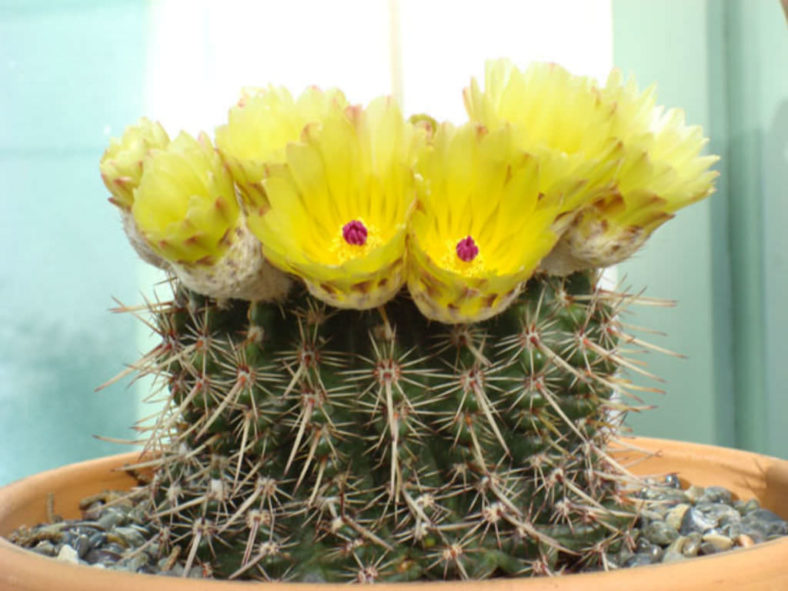Scientific Name
Parodia mammulosa (Lem.) N.P. Taylor
Common Name(s)
Lemon Ball, Lemon Ball Cactus, Tom Thumb, Tom Thumb Cactus
Synonym(s)
Echinocactus mammulosus, Malacocarpus mammulosus, Notocactus mammulosus, Ritterocactus mammulosus
Scientific Classification
Family: Cactaceae
Subfamily: Cactoideae
Tribe: Notocacteae
Genus: Parodia
Etymology
The specific epithet "mammulosa (mam-uh-LO-sa) means "having nipples" and refers to the humps on the ribs of the stem.
Description
Parodia mammulosa, formerly known as Notocactus mammulosus, is a small cactus with a globose, usually solitary stem with a dark green surface and a flattened apex. The stem can grow up to 6 inches (15 cm) in diameter and has 18 vertical ribs with large pointed tubercles. Each areole bears 8 to 30 radial and 1 to 4 central spines. The radial spines are whitish to brownish and up to 0.4 inches (1 cm) long, while the central spines are white or yellow with a brown tip and up to 0.8 inches (2 cm) long.
The flowers are golden yellow, up to 2 inches (5 cm) in diameter, and appear in spring.

Hardiness
USDA hardiness zones 9b to 11b: from 25 °F (−3.9 °C) to 50 °F (+10 °C).
How to Grow and Care
If you can grow cacti and succulents successfully, you can likely grow the popular Parodia without too much trouble. However, it is key to remember that Parodias don't like direct sunlight and are accustomed to more even water than many other cacti species. Therefore, the cactus mustn't be exposed to prolonged dampness and sitting water. Never let your cactus sit in a dish of water. To encourage better flowering, allow the plants to enjoy a cooling period in the winter and dramatically cut back watering. However, unlike other cacti species, you don't need to stop watering entirely. Lastly, ensure to fertilize during the growing season for the best results.
Repot as needed, preferably during the warm season. To repot Parodia, ensure the soil is dry before repotting, then gently remove the pot. Knock away the old soil from the roots, removing any rotted or dead roots. Treat any cuts with a fungicide. Place the plant in its new pot and backfill it with potting soil, spreading the roots out as you repot.
See more at How to Grow and Care for Parodia.
Origin
Parodia mammulosa is native to Argentina, Brazil, and Uruguay.
Forms and Subspecies
Forms
Links
- Back to genus Parodia
- Succupedia: Browse succulents by Scientific Name, Common Name, Genus, Family, USDA Hardiness Zone, Origin, or cacti by Genus
Photo Gallery
Click on a photo to see a larger version.



